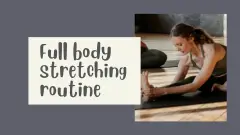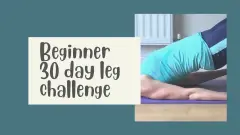The hamstrings are a group of muscles at the back of the thigh. Tightness is a common problem in these muscles and it can lead to back pain, poor posture, impaired ability in sports and fitness and injury to the hamstrings themselves. To improve muscle flexibility, you need to stretch your muscles regularly – ideally daily. This hamstring stretch challenge includes 8 different stretches, so that you stretch your hamstrings in a range of positions. Each day you do a different combination of 2 stretches to gradually loosen your hamstrings.
Things that cause short hamstrings
Our muscles need to be able to stretch and contract all the time as we move. If the length to which they can stretch to is limited, then they feel tight and movement is restricted. Having short hamstrings is a common problem that can be caused by:
- Inactivity
- Spending long periods sitting every day
- Poor posture
- Weak glutes
Safe hamstring stretching
Some hamstring stretches may be unsuitable for very short hamstrings. The reason for this is that they can put a strain on the muscles of the lower back. The best stretches to improve hamstring flexibility if you have a lot of tightness are ones which will increase flexibility without compromising the low back. The stretches in this challenge workout are all fine, as long as you are careful to follow the instructions and, in the case of stretch no. 8, make sure you use a block if you need one.
Notes on doing the stretches
- Muscles are more flexible when they’re warm – stretching cold muscles can result in overstretching and injuring the muscle. So you need to do these stretches either when you have been active in some way, walking or doing household chores for example. Alternatively, see these warm up exercises.
- As with all stretching, you should not feel any pain. Ease into the stretch until you feel the tension. Hold the position here for 30 seconds.
- Make sure you follow the instructions for getting into the stretch to avoid injury. Also, read these general safety guidelines.
- For the sitting, kneeling and lying stretches, you need some sort of cushioning, ideally an exercise mat. See an exercise mat buying guide here.
- For stretch #8 you need a block to support you until you can touch the floor. A yoga block is ideal, alternatively use any solid item of the right height that won’t slip.
30 day hamstring stretch challenge
The chart shows a different combination of 2 stretches for you to do each day. Remember to hold each stretch for 30 seconds. Instructions for the stretches are below the chart.
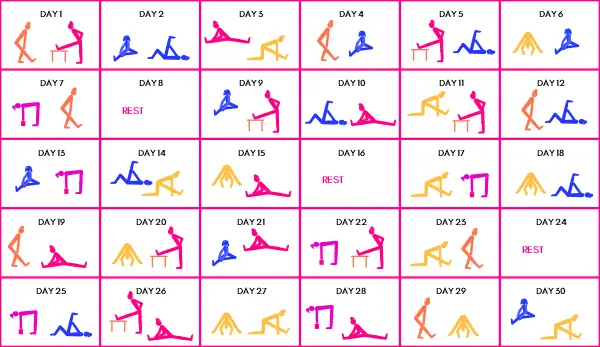
How to do the stretches
#1 standing stretch
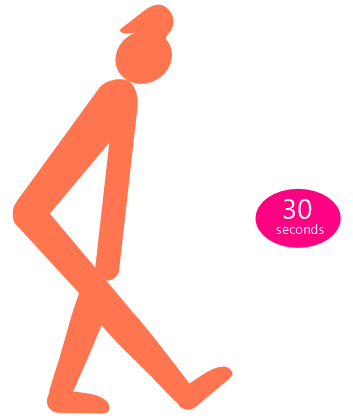
- Bend one knee and stretch the other leg out in front, then flex your upper body towards your legs.
- Your hands should be resting on the bent leg, not the one that is stretching.
#2 standing stretch with chair/bench
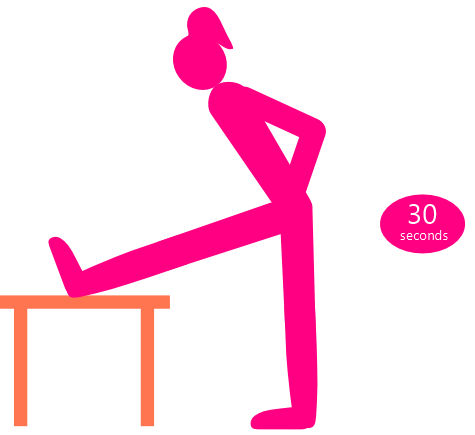
- Rest one foot on the chair or bench and straighten your leg out, making sure you don’t push your knee backwards.
- Lean your upper body over your leg until you feel the stretch.
#3 seated stretch
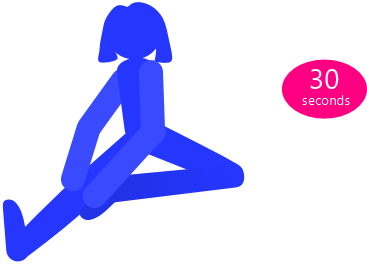
- Sit with one leg stretched out in front of you and the other leg bent comfortably out to the side.
- Slowly lean down over the straight leg, supporting your weight with your hands.
#4 lying stretch

- Lie on the floor with one leg bent, foot flat on the floor.
- Gently pull the other leg towards you, holding onto it with both hands either on the calf or above the knee.
- Hold the position when you feel the stretch along the back of your leg.
- If you can’t reach to hold onto your leg, then use an exercise band/strap or a scarf around your leg, as shown below. As your hamstring flexibility improves, it will be easier to reach your leg.
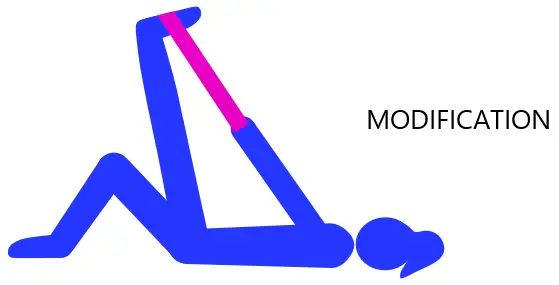
#5 kneeling stretch
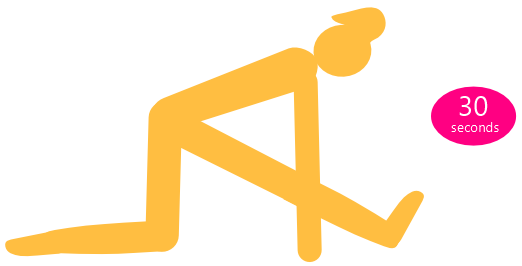
- Kneel on one knee and extend the other leg in front of you, then slide the leg out until you feel the stretch.
- Support your weight with your hands on the floor, either side of your leg.
#6 inner thigh and hamstring stretch
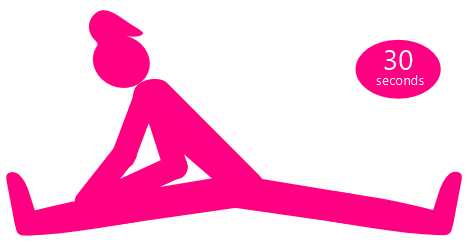
- Sit with your legs as wide as is comfortable for you.
- Rotate your upper body towards one of your legs.
- Hold onto the leg with your hands.
- Slowly lean over the leg until you feel the stretch in your hamstrings.
#7 touching floor with wide legs
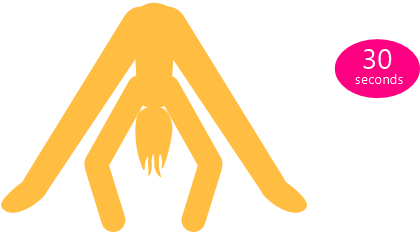
- Take your feet as wide as is comfortable and bend your knees slightly.
- Slide your hands down your legs until your finger tips are touching the floor.
- Move your hands to about hip distance apart in front of you.
- Keeping your finger tips touching the floor, straighten your legs as much as you can and hold the stretch.
- As your flexibility improves, work on getting your legs straight and once you have achieved this, work on getting your hands flat to the floor.
#8 bending over with legs together
It’s important for your upper body weight to be supported in this stretch. You don’t want your weight to be hanging on your lower back ligaments. Unless you already have good hamstring flexibility, you won’t be able to touch the floor and will need something to support your weight. Use a yoga block or any solid object that won’t slip.

- Stand with your legs close together and knees bent, holding your block in your hands.
- Lean over and place the block on the floor as shown, using it to support the weight of your upper body.
- Now try to straighten your legs – at first you may not be able to straighten them completely, but work towards this.
When you do this challenge, remember that improving flexibility can’t be rushed and, unlike other aspects of fitness, pushing yourself doesn’t get better results. If you force stretches you’ll end up with pulled muscles. Just stretch every day to the point where you feel the tension and your flexibility should steadily increase.
Related to hamstring stretch challenge
